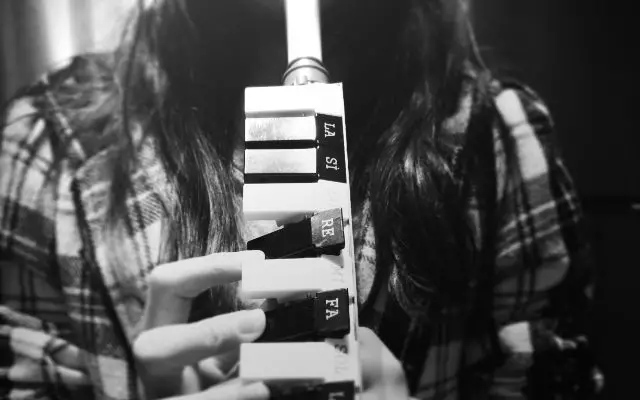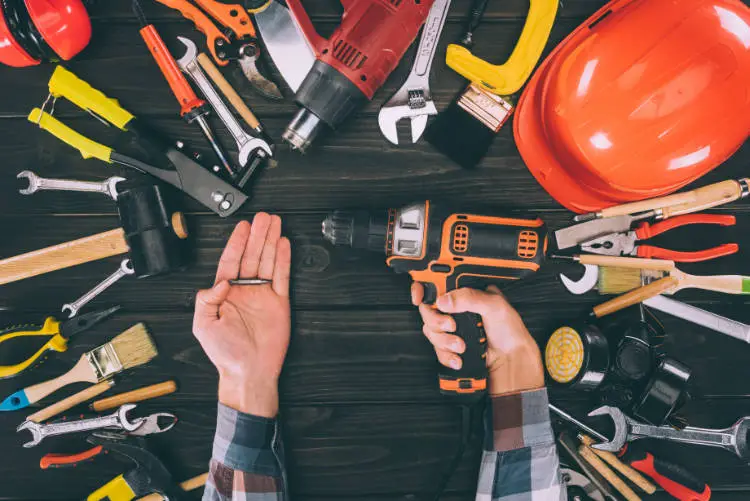With the popularity of some Jazz, Blues, and Pop artists who are bringing the melodica to the forefront of musical news, a lot of people are wondering, “What is a melodica?”
A melodica is an extremely expressive instrument that has crossed all musical genres. Once often thought of in less than serious terms, it has become a legitimate powerhouse of a lead instrument. From Dub and Rock to Blues, Jazz, and Pop, all types of artists are using melodicas to tell their musical stories.
Is a melodica a real instrument?
Because of this “less than serious” image, people even today might ask whether or not the melodica is a “real” instrument. What they typically mean when they ask this question is whether or not melodicas can be more than just toys for kids to play with or merely a cheap, low-quality way to teach kids beginning piano.
Some of the articles on our site contain affiliate links. We're careful about what we review and recommend. As an Amazon Associate, we may earn something small from qualifying purchases. Thanks for the support!
The thing is, melodicas can be wonderful musical toys. And they can also be great, affordable tools for teaching people of any age the rudiments of music theory as well as keyboard performance.
Some companies are producing very high-quality melodicas today, and very serious musicians are using them to make great music.
The technical bits – how does a melodica work?
Often compared to the harmonica and the accordion, the melodica is a free-reed instrument. You play it by blowing air through a mouthpiece located at one end of the body. A keyboard on top opens holes for air to flow over the reeds which creates notes and allows you to play melodies and chords.
Melodica keys
Most melodicas have keyboards that are two or three octaves in range. When it comes to the number of keys, however, they can vary a bit. You’ll find 32 or 37 key varieties, but there are both smaller and bigger ones as well. The keys are generally much smaller than on a piano. So, if you’re used to the size of keys on a piano, it might take a little getting used to.
Buttons vs keys on a melodica
Early versions of melodicas often didn’t even have piano-like keys. Some of the first melodicas had buttons instead of keys. It’s still possible to find models that feature buttons; however, piano style keys have become the norm.
Some of the older, button-style melodicas are actually quite valuable vintage instruments. As with any musical instrument community, such as guitars or violins, some of these early instruments are very sought after.
Melodica mouthpiece
There are two standard ways that you’ll see musicians getting air into a melodica. One way is through a small rigid tube, usually between one and three inches long, attached to the side of the melodica. When using this mouthpiece, the instrument is usually held in one hand near the mouth while it’s played with the other hand.
The second way to get air into a melodica is through a longer, flexible tube that connects to the shorter one. This longer tube allows you to set the melodica on your lap or on a table. You can then play it with two hands, more like a piano. Many melodicas can be played in both orientations.
The origins of the melodica
There is some disagreement about exactly who invented the melodica. Many people agree that the melodica was invented in the late 1950s by the instrument company Hohner. While this is probably at least somewhat true, it’s important to note that we’re referring to the modern form of the instrument.
Other forms of the melodica have been around since the 19th century. Also, the Italian company Borel produced a version of the instrument in the early ’50s, possibly a few years before the Hohner melodica version, called La Clavietta.
Have a look. The video is in Portuguese, but even if you don’t speak the language, you can see and hear the instrument.
What are melodicas made of?
The construction of melodicas, in terms of both materials and build quality, is really dependent on the level of instrument you purchase. For instance, it’s super easy to pick up an inexpensive melodica for well under $50; however, it will be made mostly of plastic. Also, the build quality may not be all that sturdy.
Professional level melodicas, on the other hand, might be built from materials like metal and wood in addition to some plastic parts. The build quality will also be a lot higher. You may even be able to pass it down to the next generation.
Because of their size, construction, and light weight, they are easily portable, making them ideal as stage instruments and as musical learning tools for kids and students.
Who Uses Melodicas
Melodicas are great instruments to learn music with. Many music schools use melodicas for instruction. Since they have a keyboard that’s a smaller version of a piano, it’s much easier to play chords and accidentals on a melodica than it is compared to other woodwind instruments.
In the 1960s, composer Steve Reich and Jazz musician Phil Moore Jr. started to use melodicas as serious instruments. Jamaican Dub and Reggae musician Augustus Pablo used them extensively in the 1970s.
The band New Order used melodicas prominently in the 1980s, and
The band Gorillaz have used them heavily on many songs. Melodicas have become very popular in indie-folk and rock music lately as well.
How much do melodicas cost?
Obviously, there is a wide range of prices that you can expect to pay when shopping for a melodica. We can, however, look at some possible prices that you might come across. Prices will generally be broken up between instruments made for different skill levels. For instance…
Beginner melodica prices
The melodica is a very easy instrument to begin with in terms of cost. These days, a low-end beginner melodica can run as low as $30. You may even be able to find something less, but if you’re going to take playing it seriously, I would avoid those. Higher-end beginner melodicas can run to about $100 or so.
Intermediate melodica prices
When you get into intermediate melodicas, the build quality goes up, and you might start seeing a lot less plastic in the case. Some good quality intermediate melodicas, however, are made almost entirely of plastic. So, don’t let that, in itself, put you off.
In this category, you’ll see prices starting at about $100 and going up to about double that.
Professional melodica prices
When you get to the professional instruments, be prepared to spend at least $150 to $200. As with most professional musical instruments, the sky is the limit here on the upper end. Some boutique makers will command whatever price they want, especially if they have a good reputation and following. But you’ll see prices well over $1,000 for a very high quality brand name professional melodica.
I will say, however, that high-end melodicas, in general, are much more affordable than other high-end instruments like pianos, violins, and other woodwinds.
Vintage melodica prices
Just a quick note about this category as well. There are collectors in the melodica community that love finding very early, good quality melodicas and melodions, and they will pay dearly for them. Depending on how rare the instrument is, and the shape it’s in, these can go for hundreds, and yes, thousands of dollars.
Types of Melodicas
Soprano & Alto: These are higher pitched and somewhat thinner sounding than other melodicas. You might see some musicians playing soprano and alto melodicas with two hands.
Tenor: These are lower in pitch than soprano and alto melodicas. It’s common to play these models with one hand on the keyboard and one hand holding the melodica. They can also be played with an air tube while the melodica is sitting on a table. The player would then use two hands for the keyboard.
Bass: This is the lowest melodica in terms of pitch and the least common. A musician will get rich, deep bass tones from these models.
Accordina: On these instruments, buttons replace the normal keyboard. Usually made of metal, many inexpensive models also feature plastic buttons.
Melodicas have several alternate names, such as Melodion, Melodika, Melodia, Pianica, Melodihorn, and Clavietta. You may also see them referred to as a Hooter (nickname).
In Conclusion
As melodicas get more popular, they will evolve and change. New models come out regularly, and new features are added to make them even more fun to play.
With musicians like Jon Batiste playing a melodica almost nightly on network television, the popularity of the melodica is only going to grow. And that rate, a lot fewer people will be asking, “What IS a melodica?”




